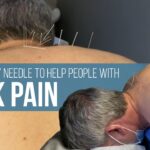Arthritis is very common in the United States. In fact, studies report that approximately 18-25 percent of Americans are diagnosed with osteoarthritis. That’s almost 1 in 4 people. This can be a scary diagnosis, indicating joint pain and degeneration. Knowledge is often power and can help people create a plan for coping with arthritis and related pain.
First, to clarify, this blog will primarily cover osteoarthritis, not rheumatoid arthritis, which has an autoimmune component. There is a lot of information out there about arthritis and this blog aims to demystify some of the common misconceptions about arthritis. First, I will introduce the basic criteria for diagnosing a person with osteoarthritis and explain the stages of arthritis. I’ll also summarize the most important things a physical therapist wants you to know about arthritis and give you some great information about living with arthritis.
What is Osteoarthritis?
This is the most common form of arthritis. Think of this form of arthritis as being caused by excessive strain on the joints. This causes the gradual breakdown of cartilage, the smooth surface at the end of bones that allows joints to slide.
Stages of Osteoarthritis
Stage 1 – mild/prearthritic
Minor wear and tear on the joint surface, which may or may not be picked up on an x-ray. There are changes in the chondrocytes, but patients often have no symptoms at this stage.
Phase 2 – Mild
During this stage, changes in the joint can be seen on x-rays, including the surface with “rough” areas and possible bone spurs. Pain and stiffness vary from person to person. Often, this stage can be managed with anti-inflammatory medications and/or lifestyle changes.
Stage 3 – Moderate
Characterized by narrowing of the joint space and increased signs of wear. Joint swelling may occur and pain may occur with activity and/or rest.
Stage 4 – Severe
Cartilage wear is evident and bone spurs may enlarge. Joint space is narrowed. There is less synovial fluid (natural joint lubrication) during this stage.
Myths About Arthritis
1. Rest is best: False
Many people associate arthritis with overuse and feel they need to stop using the joint and reduce activity levels to protect the joint. This can actually be detrimental in the long run, as the joints become stiffer and the muscles around the joints weaken.
2. Once you have arthritis, the pain only gets worse: WRONG!
Many people have success and relieved their arthritis pain without surgical intervention. Although it depends on the specific situation, lower stages of arthritis respond very well to exercises with proper strength and range of motion.
3. Arthritis means bone on bone: False
This isn’t necessarily true. Remember that arthritis has multiple stages. If your doctor tells you they see some mild degenerative changes or arthritis in the joint on x-rays, don’t assume the joint is “bone-to-bone.”
4. Arthritis is the only thing to worry about as you age: False
More than half (60%) of adults with arthritis are of working age (18-64 years). There are many risk factors associated with developing arthritis, including lifestyle and body weight.
The Only Negative Effects of Arthritis Are Pain and Stiffness: False
Many times, people with untreated arthritis pain are overly cautious and limit their activities due to pain or fear of worsening symptoms. Less physical activity increases their risk of diabetes, heart disease and obesity.
have arthritis
After dispelling the above myths, it is important to note that physical therapists want you to understand some important points about arthritis, its impact on your life, and treatment options. Arthritis, as the name suggests, does mean inflammation and rupture in the joints, but with treatment, the pain and weakness can be greatly reduced. This is especially true if treated in the early stages. Stretching, strength training, and moderate aerobic activity are all important when managing arthritis to maintain good mobility and support for your joints. It’s always important to stay active to keep your body healthy, and choosing the right ones can help ensure you get the most benefit without exacerbating your arthritis pain.
A physical therapist can help you find the best exercises to maintain strength and flexibility without stressing your joints. Physical therapy has been shown to help reduce pain more than anti-inflammatory drugs alone. Physiotherapists are also well qualified to help you determine whether exercise alone is enough, or if you are at a stage where you should consider consulting an orthopedic specialist.
If you’re looking for some extra help with arthritis, or want to learn more about developing an exercise program that fits your needs, request a free evaluation at an Athletico location near you. Free assessments are available in-clinic or virtually through our telehealth platform.
*Beneficiaries of programs such as Medicare, Medicaid, Tricare, VHA, and other federally funded programs are not eligible for free evaluations per federal guidelines.
The Athletico Blog is an educational resource written by Athletico staff. Athletico bloggers are licensed professionals who abide by the codes of ethics established by their respective professional associations. The content published in blog posts represents the opinion of the author alone, based on his expertise and experience. The content presented in this blog is for informational purposes only and does not constitute medical advice and should not be relied upon in making personal health decisions.
refer to:
Arthritis in America – CDC. https://www.cdc.gov/vitalsigns/pdf/2017-03-vitalsigns.pdf.
Brown, Joe and Carly Eastin. “Physical Therapy and Glucocorticoid Injections for Osteoarthritis of the Knee.” Journal of Emergency Medicine, vol. 59, no. 6, 2020, pp. 985–986., https://doi.org/10.1016/j.jemermed.2020.11.012.
Skou ST, Roos EM. Physical therapy for patients with knee and hip osteoarthritis: supervised active treatment is current best practice. Clinical Trials Rheumatology. 2019 Sep-Oct;37 Suppl 120(5):112-117. Epub October 15, 2019. Errata in: Clin Exp Rheumatol. 2020 Sept-October;38(5):1036. PMID: 31621559
Lawrence, Reva C., et al. “Estimates of the Prevalence of Arthritis and Selected Musculoskeletal Disorders in the United States.” Arthritis and Rheumatism, vol. 41, no. 5, 1998, pp. 778–799., https://doi.org/10.1002/1529-0131(199805)41:5<778::aid-art4>3.0.co;2-v.



